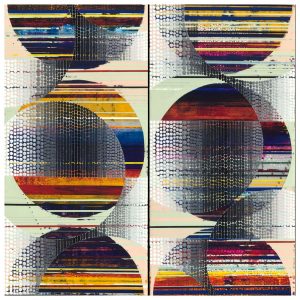June 14 – July 10, 2019 | Glitched: Nina Tichava and Shawn Smith
Turner Carroll Gallery is pleased to announce Glitched, an exhibition of artworks by California College of the Arts alumni Nina Tichava and Shawn Smith. While Tichava and Smith vary vastly in their medium and creative process, they both explore the intersections of culture, technology, and the environment through their art practices. Tichava’s offsetting of the visual linear code in her works alters the geometric form from what we expect to perceive. Smith, who conceives his sculptures by viewing images of animals through a pixelated computer screen, plays with how an image of an animal is mutated by changing the computer code within the digital image. Of course this mutated animal image is a metaphor for what happens to animals in reality when we alter their food and environment. Thus, all the animals Smith renders are on the verge of extinction.
A process-driven artist, Tichava painstakingly hand-produces effects and patterns that at first glance look as though they may have been produced by a computer or industrial machine, but upon closer inspection reveal the depth, nuance, and humanity of the artist’s hand. Her mixed media pieces are deeply layered and complex. The influence of her New Mexico upbringing in a family of weavers is evident in the overt textile-like layering of thin slices of paper. Woven textures and washes are eventually obscured further by a field of opaque white paint that at once defines geometric the forms and the space the forms occupy. Thousands of beads of paint are set into ordered grids that disintegrate as they grow outward. These multi-faceted layers of warp and weft, the rich amalgam of hybrid color, and the deconstructed grids in Tichava’s intricate works allude to the technical malfunctions or glitches in lines of code that can cause visual disruptions to appear in digital images.
Growing up in a large city where his experience of the natural world was mostly limited to the digital environment of computer and TV screens, Shawn Smith renders images of the natural world into three-dimensional sculptures. Isolating the subject from the frame and distilling its color palette down to the minimum—-just enough information to be identifiable-—he builds three-dimensional representation pixel by pixel with hand-cut, hand-dyed strips of wood. His process is intentionally laborious to contrast with the modern culture of rapidly consuming online images, and also punctuates how important each pixel is in informing the identity of an object or being. The pieces in Glitched undergo further manipulations, as in the forced distorted perspective of “Stretch” and “Squish” where Smith has recreated, in three-dimensional form, the visual effect of “stretching” or “squishing” the aspect ratio of a digital photograph.
Opening Reception Friday, June 14, 2019 from 5 to 7pm
Shawn Smith and Rusty Scruby in the News

Shawn Smith and Rusty Scruby News in Abilene Reposter for Exhibition “Art + Science = Wonder” exhibition at The Grace Museum
Turner Carroll artists Shawn Smith and Rusty Scruby are in the news for their exhibition “Deliberate Distraction” at The Grace Museum. The museum’s web site and press download states wonderfully and succinctly “The common misconception that art and science are so vastly different, that they never overlap, is discredited by two contemporary artists, Rusty Scruby and Shawn Smith, whose work proves that the union of these two disciplines, like the brain’s neuropathways between our right (artistic) and left (analytical) hemispheres, is the sweet spot known as creativity.”
The Abilene Reporter News story quotes Smith “My work investigates the slippery intersection between the digital world and reality. Specifically, I am interested in how we experience nature through technology.” He goes on to further state that “I am interested in how each pixel plays an important role in the identity of the object, the same way each cell plays a crucial role in the identity of an organism.” Well done.
31 July 2018
June 22 – July 9, 2018 | Science as Art: Shawn Smith, Rusty Scruby, and Matthew Shlian
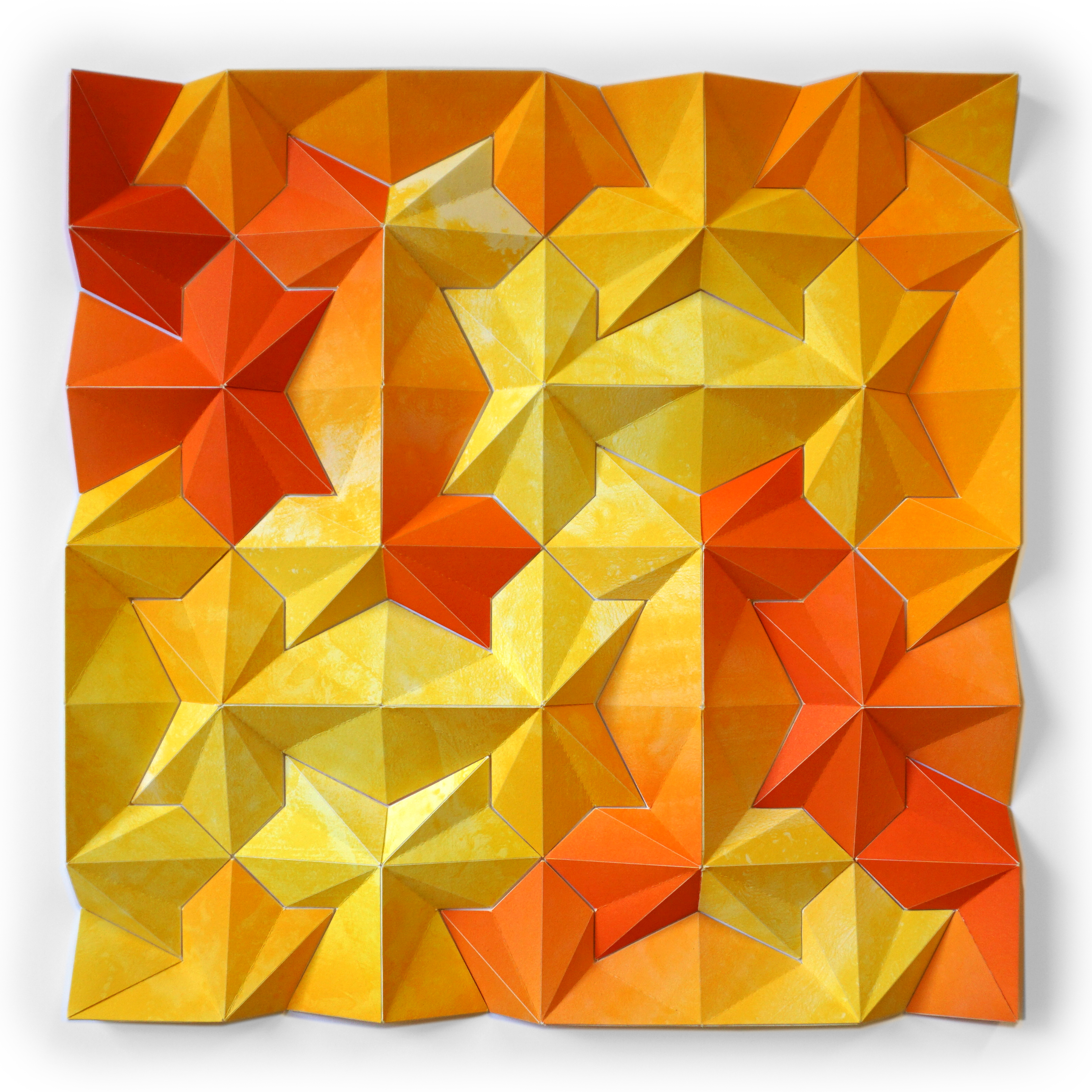
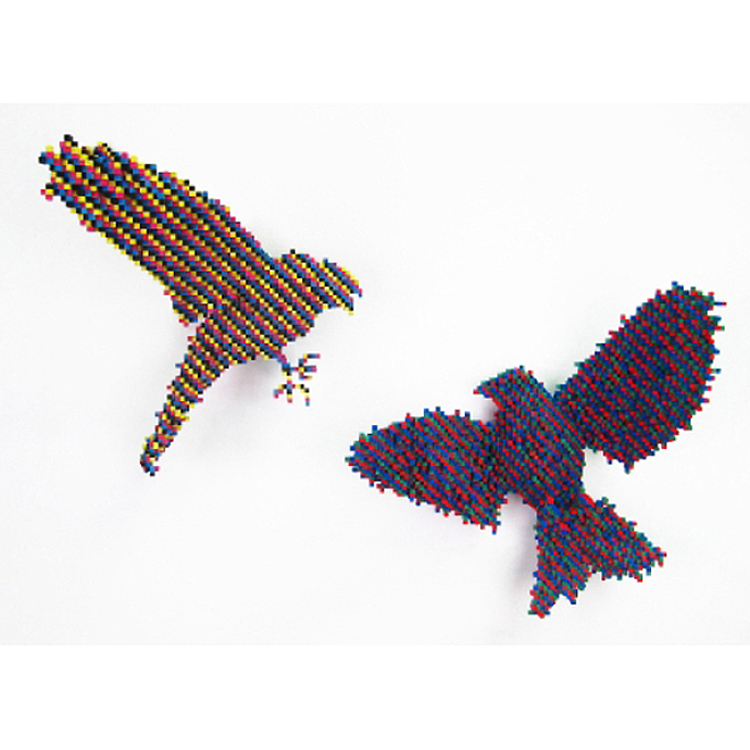
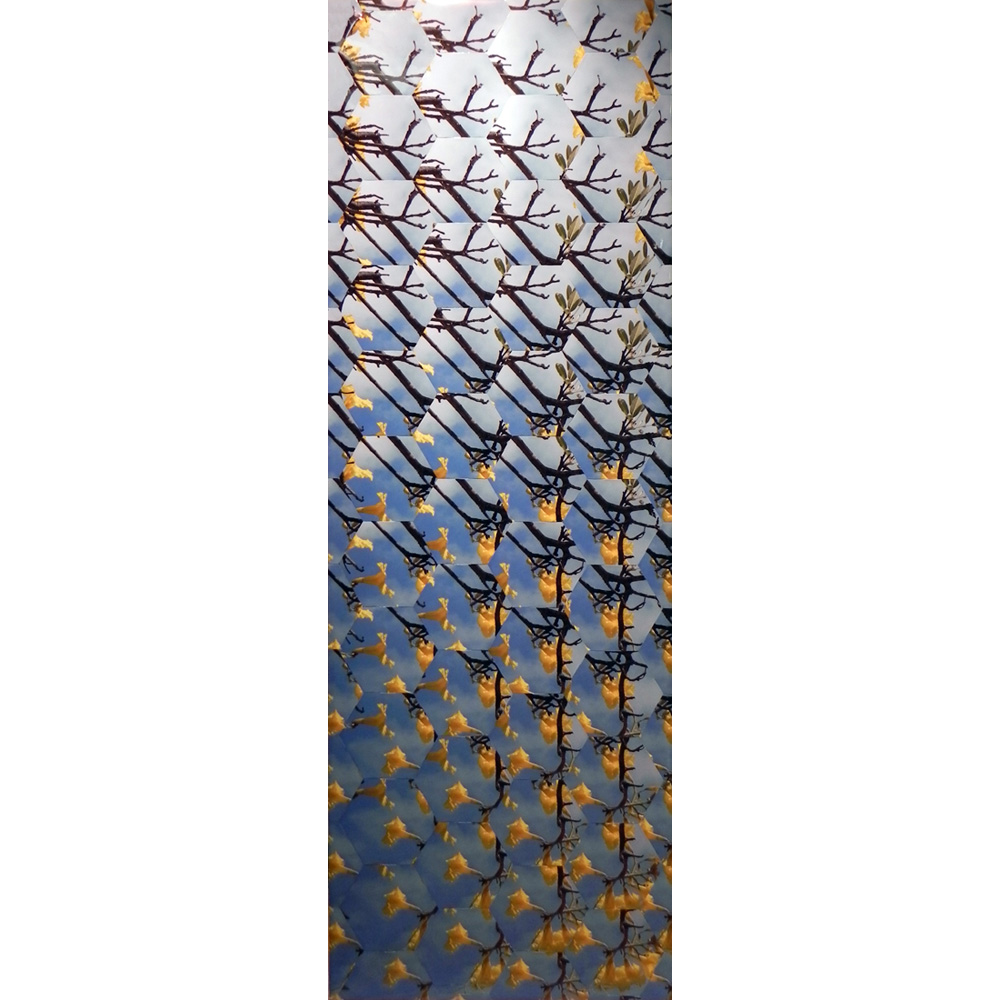
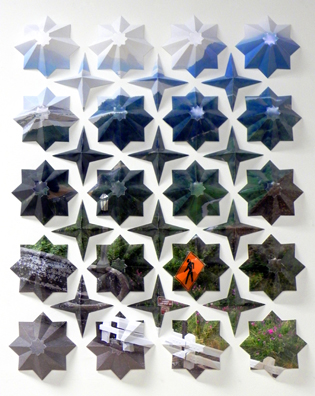
Opening Reception Friday, June 22, 5-7pm
In conjunction with Smith and Scruby’s exhibition at Grace Museum in Texas, and Matthew Shlian’s Frederick Hammersley Residency and Wonder Cabinet at Tamarind Institute.
“After a certain high level of technical skill is achieved, science and art tend to coalesce in esthetics, plasticity, and form. The greatest scientists are artists as well.” Albert Einstein
The realms of science and art are often considered mutually exclusive; the right hemisphere of the brain is thought to control our artistic and creative abilities, while the left our mathematical and logical skills; science is viewed as linear and precise, whereas art is accepted as open to individual interpretation. However, in Turner Carroll Gallery’s exhibition, Science as Art, artists Shawn Smith, Rusty Scruby, and Matthew Shlian explore the intersectionality between science and art, using their works to deconstruct the categorizations generally used to dichotomize the two subjects. Here, science is used as a medium in the same way as paint or plaster, touching on subjects such as technology, mathematical relationships, and the natural world in a way that uses scientific principles and processes to evoke aesthetic beauty and provoke audience response within the various pieces.
Work in the exhibition may be viewed here.
For more information and high resolution images, please visit https://turnercarrollgallery.com/press-area/ or info@turnercarrollgallery.com
Shawn Smith Catalog Essay: The Players at the Table by James Bridle
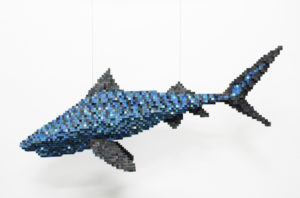
Shawn Smith, Blue Tiger Shark, mixed media
In December of 2007, a few days before Christmas, hundreds of enthusiasts from all over the world gathered at the Sixth International Chess Festival in Benidorm, Spain. One of the highlights of the festival was a demonstration by World Champion Viswanathan Anand, during which he played thirty-five simultaneous games against skilled opponents, conceding only one loss and five draws. Photographs of Anand’s contest show him penned in by a ring of tables, surrounded by chequerboards, with the black armies of his challengers advancing and falling back, ant-like, around him – an image of supreme mental achievement. But inside another smaller and dingier room at the festival, a very different and much more significant contest was taking place. In the first event of its kind ever staged, thirty-one competitors participated in a Freestyle Advanced Chess tournament, a form of the game in which players may use the technology of their choice to assist them during competition. Tables were covered with multiple laptops, tower computers and monitors, and players pored over databases of plays, whole histories of chess, and calculated thousands of possible moves ahead. The play was fast, frenetic, and unlike any other games played in tournament before.
Advanced Chess has grown in popularity in recent years, and we can date its inception – its genesis, if not its first deployment – with great accuracy. Ten years and seven months before the Benidorm tournament, in a hotel auditorium in New York, Gary Kasparov lost in 3.5 to 2.5 games to a computer: IBM’s Deep Blue. Kasparov, widely regarded as the greatest Chess player of all time, has never accepted the loss, but he saw which way the wind was blowing. Human intelligence, and more specifically the uniqueness of human intelligence in nature, is no longer unquestioned. As a result, Kasparov developed the new discipline of Advanced Chess: humans, aided by machines, playing against other humans aided by machines. The result has been a revolution in Chess. While the theory and practice of computer chess, as well as its hardware, has advanced rapidly, to a point where any Grandmaster today will struggle against relatively simple machines, human-computer teams routinely triumph over the most complex machines in the world. Co-operation, not competition, seems to be the answer when it comes to thinking through our trickiest problems.
Advanced Chess is also known as “centaur play”, called so after the half-human, half-horse monsters of Greek mythology. The origin of these strange creatures is often attributed by scholars to the arrival among the non-riding cultures of the Aegean of mounted raiders from Asia, who saw them as terrifying, hybrid apparitions. Their shock is echoed in our own reaction to the new monsters in our midst: augmented natures, of our world but unlike it, demanding to partake in our events. In the light of such uprisings, we must rethink our relationship with technology, and our place as masters of our tools, and our environment. As our technological achievements take on strange, new lives of their own they reshape us too – and, if we are serious about no longer putting ourselves at the centre of our thinking, we must rethink our relationship to what we once termed the “natural world” through the lens of technology too.
Our modes of representation and interaction are increasingly conditioned by the systems we use every day: the pixels of the digital camera which captures antelope at play on the savannah and ourselves, bathed in the screenlight, before video chat; each image transmitted as light through fiber optic cables and reconstituted on screens far away, to be downloaded, processed, and re-screened. The processes of encoding and decoding by which we approach the digital world are literal instantiations of the emotional and social processes we have always carried within us, made explicit by the technologies we have written to enable them at scale and distance.
It is this interdependence of modes of thinking which is called to mind by George Dyson when he writes: “In the game of life and evolution there are three players at the table: human beings, nature, and machines.” Dyson picks sides, for himself and for the other players, but I’m not sure the gaming metaphor suffices here, or not the one that Dyson intends. It is in the spirit of cooperation rather than competition, entanglement rather than distance, that these assemblages manifest. As the political theorist Jane Bennet has written, there is no true separation possible between the agency of people and things; rather we must acknowledge ‘thing-power’: “the strange ability of ordinary, man-made items to exceed their status as objects and to manifest traces of independence or aliveness, constituting the outside of our own experience.” In Bennet’s taxonomy of vitality, ‘things’ – animals, edibles, commodities, storms, metals, silicates, stem cells, machines – “act as quasi agents or forces with trajectories, propensities, or tendencies of their own”.
The layers of agency in Shawn Smith’s sculpture echo and restate these trajectories. Starting with digital images of living creatures, the artist manipulates their likeness in software programmes, which have been coded and compiled by hundreds of software engineers, based on the findings of computer and natural scientists over decades, in the fields of colour theory and image processing. Each pixel is cut to shape, expanded, coloured, before it ever leaves the screen – or may be undigitised, sketched onto graph paper, hand-coloured and planned out.
Some of Smith’s animals undergo further manipulations, further explorations of this material plane. The griffon vulture is a scavenger, a consumer of the dead, an apt avatar for Smith’s own consumptive practices. Smith’s griffon has been digested itself, its raw information cleaved apart and reconstituted in a hex editor, which allows the user to manipulate data at the lowest level. Tinkering with such base materials, the DNA of digital representations, results in a spray of the most unnatural colours, a rainbow of artificial pinks, yellows and greens. The results, however, are unpredictable: the “glitch” is both a glimpse into the inner workings of the machine’s vision, and an emergent, non-human artistic possibility, a form of creativity claimed by software, which we can only guess at.
Finally, these images are reconstituted in paint and plywood, an intensely industrial material comprised of multiple layers of laminated woods, peeled, patched, graded, glued and baked together, as far from “natural” wood as any mass-produced plastic product. And in the space of the gallery, they continue to toy with definition, appearing both close and immediate, frozen in motion, while on approach breaking apart, becoming dead, and uncanny, like digital images themselves.
On the one hand, Smith’s work serves to bring us to a new accommodation with nature in all its mediated wildness, to bring it close to us when it has been so removed by documentary and digital distance, to revivify it in an age of cities and networks, perhaps even to assert that such experiences of nature remain natural even when mediated. If we cannot love nature in the raw, we should at least learn to love our digital experience of it. But at the same time it troubles all of these distinctions, and reminds us that the space between nature and us, between nature and the things we make, and between us and our own tools, is always illusory, has always been a contested and confusing space.
Smith’s sculptures then, in their raw vitality, evoke not only the majesty of nature and the functioning of technological assemblages, but also their mystery and their emergent possibilities: their thing-power. Their references multiply, allowing us to see in one the glazed eye of the machine gazing upon the world, in another the beady eye of nature gazing back, and in the whole a reflection of ourselves: predator, or prey, or something else, moving amongst these creatures, fleshy and metallic, endlessly entangled with their being, and trying to make sense of them.
- James Bridle
Biomorphed
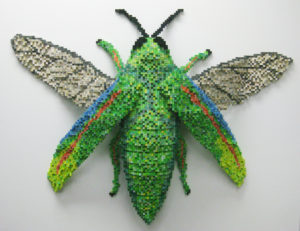
Shawn Smith, Jewel Beetle, mixed media
A definite thumbs up for the curator of the show; the combination of Shawn Smith, Rex Ray and Josh Garber speaks of an unintentional similarity where all three of them clearly share a passionate about the power of nature and uses it as their blueprint in creating intricate and mesmerizing artworks. Opening on the 30th of June until the 27th of July 2014 at Turner Carroll Gallery in Santa Fe; it’s such a pity I don’t get to see the real works myself.
San Francisco based fine artist Rex Ray, Dallas born sculptor Shawn Smith and New York graduated Josh Garber not only all display a full portfolio of solo exhibition experiences, series of commissioned works as well as collections of impressive innovations done in the past years; they are all fearless in the usage of their chosen mediums, incorporating bursting palettes for some and repetitive patterns as well as edge cutting forms of execution for others.
In the show “Bio-Morphed”, Rex Ray display works that are influenced by the Arts and Crafts movement, which undertakes textile designs as well as pattern works through the abstract form of expression, where floral reminding images in vibrant colors are boldly shown on various sized paintings, mixed media and mixed media on linen. Having worked with brands like Apple, Dreamworks, Sony Music, and Warner Brothers just to name a few and celebrity such as The Rolling Stones, David Bowie and Bjork as their graphics, poster and packaging designer; no wonder his works scream a sort of graphical outlook that easily attracts the audience.
Shawn Smith, interested in the idea of how nature and technology influences each other, has been creating numerous 3D prints and wooden animal sculptures that pull the audience closer to nature, but at the same time detach the bonding relationship with his form of pixelated execution. Challenging the naturalistic form with bleached away colors for his 3D prints; the silent heads of featured animals scream an epiphany of how technology can only imitate nature’s appearance without its true essence.
Last but not least, one of our personal favorites are the twisted dynamic shapes of aluminum, steel and bronze created by 2011 Pollock-Krasner grant receiver Josh Garber. Industrial, intricate, but appearing to be ripped from the material’s common function; the patterns created in fact reminds one of neuroscience, bonding such cold collections with notions of the human body. The new form given to these strong material encompasses them with a new sense of fragility, a lava like flow, as if a magnetic force holds them randomly together. The contrast of regularity and irregularity is strong, making it a vivid but interesting comment on the forms of nature.
Biomorphed
6/30/14 – 7/27/14
Turner Carroll Gallery: 725 Canyon Road, Santa Fe, NM 87501 USA
Shawn Smith at the Smithsonian American Art Museum
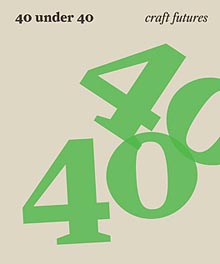
Shawn Smith in 40 Under 40 at the Smithsonian American Art Museum
More good things are happening for Shawn Smith. He was just curated into a fabulous show at the Smithsonian American Art Museum called “40 Under 40.” The exhibition investigates evolving notions of craft within traditional media such as ceramics and metalwork, as well as in fields as varied as sculpture, industrial design, installation art, fashion design, sustainable manufacturing, and mathematics. The range of disciplines represented illustrates new avenues for the handmade in contemporary culture. The exhibition runs July 19, 2012 through February 3, 2013. In addition Shawn was just included in a new book identifying the best new artists coming out of Texas by June Mattingly.
A link to the exhibition at the Smithsonian is here.
Shawn Smith in Wired Magazine
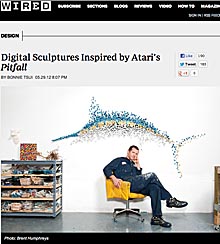
Shawn Smith in Wired Magazine
Newly minted Turner Carroll artist Shawn Smith has an article and video interview on his artwork and artistic practice in Wired Magazine. Shawn’s current body of work he calls Re-things. They are an attempt to examine natural objects through the lens of data and reconstruction.
You can see the article and video here.
May 16, 2012 | Greg Murr and Shawn Smith Now at Turner Carroll Gallery
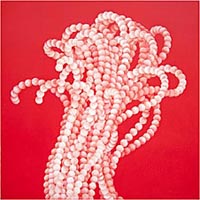
Greg Murr
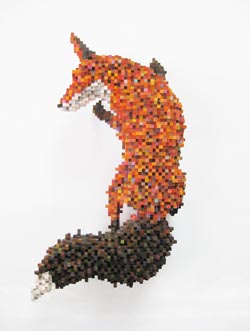
Shawn Smith
We are very pleased to say that we are representing two new artists, Greg Murr and Shawn Smith. Greg is an artist we know well, having shown his work in the 1990s before he moved to Germany. His work is in the collections of the Whitney Museum of American Art and the Progressive Collection, among others.
Shawn Smith came to us via collectors in Dallas. His work is sculptural with an aesthetic built on the digital idea of a pixel but rendered in wood. His most recent work is focused on how we experience nature through technology.
For Murr, the arc of nature runs deep within his practice. A fascination with the way the observable world exists outside our everyday awareness guides his work. Since 2008, Murr’s work has featured dogs with their noses to the ground, relying upon instincts to guide them, loose among a world of tangled pearls or fashion’s latest high-heels.

